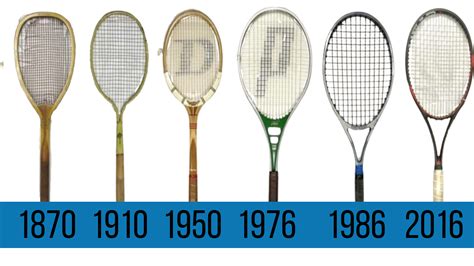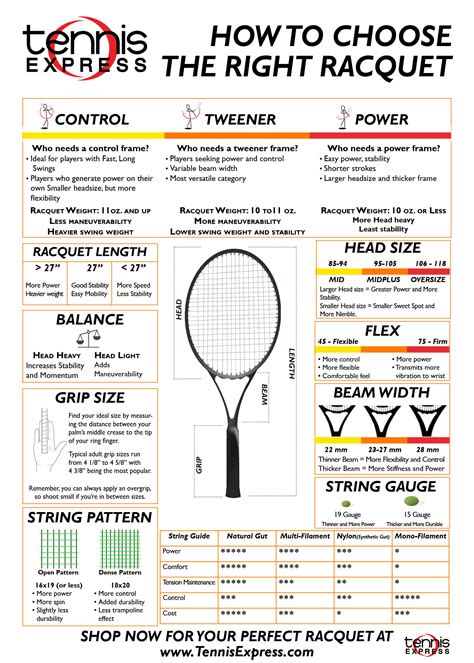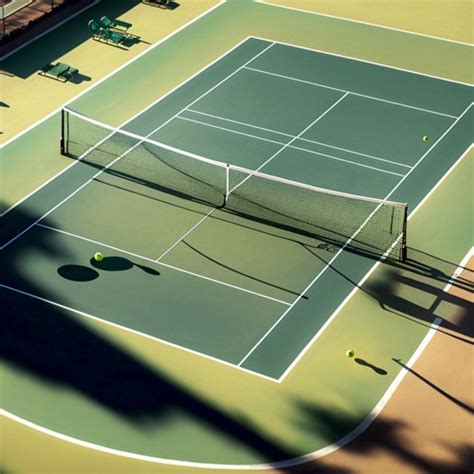Explore the evolution of tennis equipment, from wooden rackets to modern materials, and discover future trends shaping player performance and game dynamics.Tennis has a rich history marked by continuous innovation, both in gameplay and equipment. As the sport has evolved, so too have the tools of the trade, fundamentally altering how the game is played and experienced. From the early days of wooden rackets, which shaped the very dynamics of tennis, to the cutting-edge materials and technologies seen today, each advancement has contributed to a faster, more strategic game. In this article, we will explore the transformative journey of tennis equipment, highlighting key advancements in materials and technology, and their profound impact on player performance. We will also look ahead to future trends and innovations poised to redefine the sport. Join us as we delve into the fascinating evolution of tennis, where tradition meets modern ingenuity.
Early Equipment: Wooden Rackets and Their Impact on Play
The journey of tennis equipment began with the traditional wooden rackets, which played a crucial role in shaping the game’s dynamics. These wooden rackets, primarily made from hardwoods like ash, offered a unique blend of power and control that defined the play style of earlier eras.
Wooden rackets were characterized by their smaller head sizes and thicker frames compared to modern racquets. Players relied heavily on technique and precision due to the limited sweet spot, which demanded a high level of skill to achieve optimal performance. The evolution of racket design significantly influenced how the game was played; for instance, the weight and balance of these rackets required players to develop strong arm and wrist muscles, leading to a unique physicality in the sport.
Another significant impact of wooden rackets was on the style of gameplay. With their ability to generate a softer touch, players often employed more strategic plays, focusing on placement and finesse rather than sheer power. This change in play style laid the groundwork for future developments in the sport, as the quest for improvement and performance enhancement was already underway.
Moreover, wooden rackets served as a crucial learning tool for players. Many top athletes of the past benefited from mastering their skills with these early instruments, ensuring they had a solid foundation before transitioning to more advanced equipment. The evolution from wooden rackets to modern designs illustrates not only changes in player preferences but also advancements in technology and materials that have transformed tennis into the fast-paced, exciting sport it is today.
While wooden rackets may now be seen as relics of the past, their legacy remains vital in understanding the profound evolution of tennis equipment and the ongoing changes that continue to shape the game.
The Evolution of Tennis: How Materials Changed Game Dynamics
The The Evolution of tennis has been significantly influenced by the materials used in racquet and ball design over the decades. Early tennis equipment primarily featured wooden rackets, which dictated play style and strategy due to their limited response and power. As the game progressed, the introduction of new materials revolutionized how the sport was played.
The transition from wood to metal frameworks in the 1960s marked a turning point. Steel frames allowed for greater tension on the strings, resulting in improved power and control. Players could hit faster serves and more aggressive groundstrokes without compromising accuracy. This was a significant shift in the The Evolution of player techniques, as athletes adapted their styles to exploit the advantages offered by these lighter and more durable materials.
Further advancements saw the arrival of aluminum and graphite composites, which combined the strength of metals with a lightweight feel. These modern materials provided unmatched levels of power while allowing for greater feedback on ball impact, enabling players to execute tactical plays with precision. The adaptability offered by these materials also supported specialized racquets for various playing styles, further influencing competitive play.
Players like Pete Sampras and Serena Williams, who came to prominence in the 1990s, were able to dominate their matches in part due to the advanced technology in their racquets. The interplay of modern materials not only elevated their performance but also brought a dynamic aspect to the game that reshaped audience expectations and viewing experiences.
As we look ahead, it’s clear that The Evolution of materials will continue to shape tennis. Research and experimentation with materials that blend enhanced durability with technological features, such as vibration dampening and weight optimization, promise to further transform play dynamics. The ongoing quest for better equipment will likely lead to even more innovations that redefine what is possible on the court.
Technological Advancements: From Steel Frames to Modern Composites
The journey of tennis rackets has been marked by significant advancements that reflect The Evolution of sports technology. Steel frames, which became popular in the mid-20th century, represented a turning point in racket design and performance. These frames provided greater durability and power compared to their wooden predecessors, allowing players to hit the ball with more force.
However, as technology progressed, engineers and manufacturers began experimenting with new materials. The introduction of aluminum frames in the 1970s and 1980s offered a lighter and more flexible alternative, enhancing player agility and swing speed. This period was pivotal, as it marked the beginning of a shift toward performance-focused designs.
| Material Type | Key Features | Impact on Performance |
|---|---|---|
| Wood | Heavy, less durable | Limited power and maneuverability |
| Steel | Durable, powerful | Increased hitting force |
| Aluminum | Lightweight, flexible | Improved agility and swing speed |
| Graphite Composites | Highly durable, customizable | Maximized control and precision |
As we moved into the late 20th century and early 21st century, The Evolution of racket technology reached new heights with the introduction of composite materials. Graphite and carbon fiber composites emerged as favorites among professional players due to their excellent strength-to-weight ratio. These materials allowed manufacturers to create rackets that were lightweight yet incredibly strong, providing players with both power and control.
The modern racket design not only incorporates advanced materials but also technology that enables customization for individual player preferences. This personalization is evidenced by the variety of racket shapes, sizes, and weights available today, catering to a wide range of playing styles.
The shift from steel frames to modern composites has not only transformed the physical attributes of tennis rackets but has also reshaped how the game is played. As we look forward, the continued innovation in materials and design promises to further enhance player performance, making tennis even more dynamic and exciting.
The Role of Technology in Enhancing Player Performance and Strategy
In the world of competitive tennis, technology has become a crucial factor in enhancing player performance and strategy. With each passing year, innovations and advancements play an increasing role in how players prepare, compete, and analyze their games. The The Evolution of tennis equipment and technology has brought several tools and techniques that help in maximizing a player’s potential.
One significant area of focus has been the introduction of data analytics. Modern players and coaches leverage sophisticated software that tracks performance metrics such as serving speed, shot accuracy, and stamina. These metrics enable players to identify strengths and weaknesses in their games. By analyzing data, coaches can create tailored training programs that hone in on specific areas requiring improvement.
Another crucial aspect is the use of video analysis tools. By reviewing matches in real-time, players can assess their techniques and strategies against opponents. This allows for a detailed breakdown of gameplay, helping players to make strategic adjustments before and during matches. Video tech not only aids in refining techniques but also assists in developing game plans that exploit the weaknesses of competitors.
Wearable technology has also seen tremendous growth within the sport. Devices that measure heart rate, movement patterns, and exertion levels provide insights that were previously unattainable. These insights are essential for optimizing physical conditioning and recovery, ensuring that players perform at their peak during matches.
| Technology | Benefit |
|---|---|
| Data Analytics Software | Helps identify strengths and weaknesses for tailored training. |
| Video Analysis Tools | Allows strategic adjustments and refinement of techniques. |
| Wearable Technology | Monitors physical condition for optimal performance. |
The role of technology in The Evolution of tennis is profound. From data analytics to wearable tech, the enhancements provide players with the means to better their games strategically and physically. As these technologies continue to advance and integrate into training regimens, the future of player performance in tennis appears brighter than ever.
Future Trends in Tennis Equipment: What’s Next for the Game?
As we look towards the future, the landscape of tennis equipment continues to transform, influenced by ongoing innovations and an ever-deepening understanding of player needs. Here are some anticipated trends that could redefine the game:
- Smart Technology Integration: The use of sensors and tracking devices embedded in rackets and wearables is likely to gain momentum. These devices provide real-time feedback on performance metrics, helping players optimize their strategies and techniques.
- 3D Printing: As the evolution of manufacturing technology progresses, 3D printing could revolutionize how rackets and other gear are produced. Customization becomes feasible, allowing players to design equipment that fits their unique performance profiles.
- Eco-Friendly Materials: With increasing awareness of environmental issues, the industry may see a shift towards sustainable materials. Companies are researching biodegradable options that maintain performance standards while reducing ecological impact.
- Wearable Tech: Future equipment may include more advanced wearable technology, such as smart shoes and apparel equipped with data collection capabilities. This tech could provide insights into biomechanics, helping athletes prevent injuries and improve their game.
- AI and Machine Learning: The integration of artificial intelligence in training equipment and software could provide players with personalized coaching. AI-driven analytics will offer strategic insights based on individual playing styles and historical performance data.
the evolution of tennis equipment is set to continue at a rapid pace, driven by advancements in technology and changing player preferences. As these trends unfold, they are poised to enhance both player performance and the overall spectator experience, making the game more exciting than ever.
Frequently Asked Questions
What are some key milestones in the evolution of tennis equipment?
Key milestones include the transition from wooden rackets to those made of metal and composite materials, advancements in string technology, and the development of specialized balls designed for different court surfaces.
How has racket technology changed over the years?
Racket technology has evolved from wooden frames to lightweight, durable materials like graphite and titanium, incorporating larger head sizes and enhanced string patterns for improved power and spin.
What role does technology play in player training and performance analysis?
Technology plays a significant role, with tools like radar guns for measuring serve speed, video analysis software for technique improvement, and wearables that track performance metrics such as heart rate and movement.
How have tennis balls evolved since the inception of the sport?
Tennis balls have evolved from being made of gut and cloth to the modern rubber core covered in felt, with variations in pressure and material to suit different playing conditions and surfaces.
What impact has technology had on tennis court surfaces?
Technology has allowed for the creation of more consistent and safe playing surfaces, including advancements in synthetic materials that enhance ball bounce and reduce player injury risk.
How do current technologies improve player safety during matches?
Current technologies improve player safety through better court surface materials that reduce slips and falls, along with the use of padding on boundaries and structures to minimize injury risks.
What future advancements in tennis equipment and technology can we anticipate?
Future advancements may include smart rackets that provide real-time performance data, enhanced training aids using augmented reality, and ongoing innovations in materials that further reduce weight while increasing strength.









